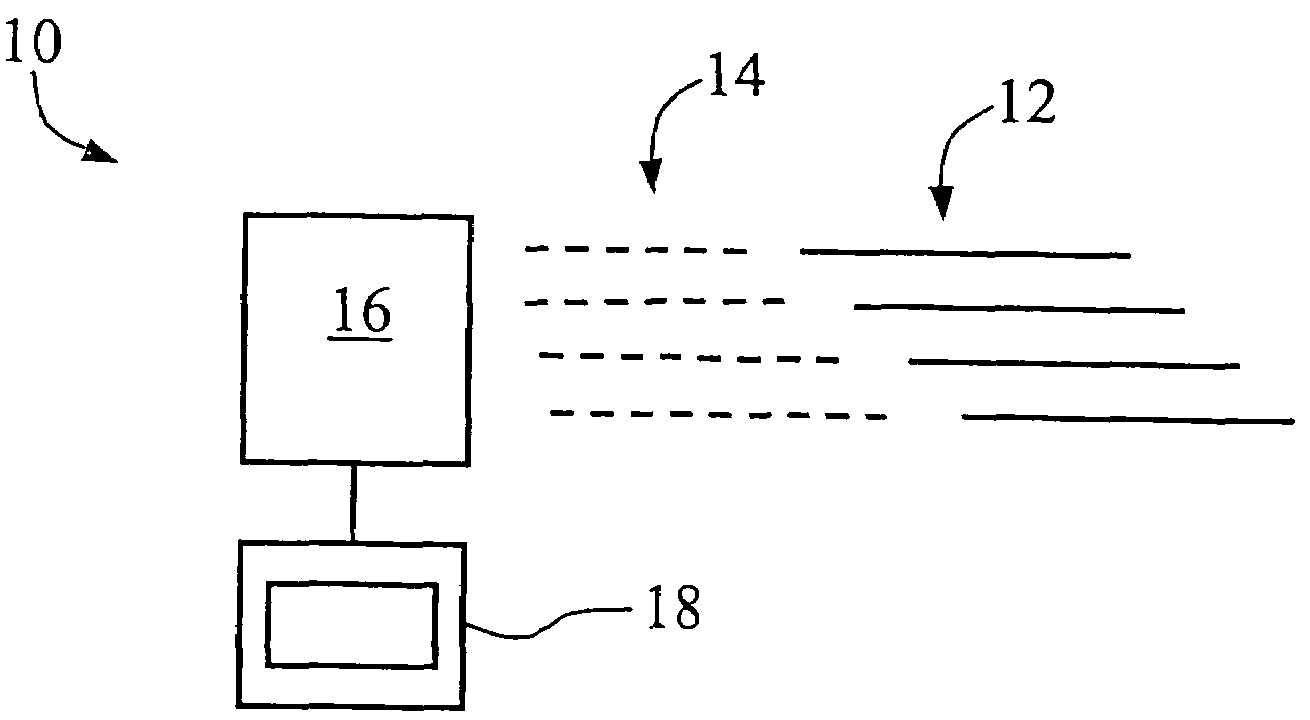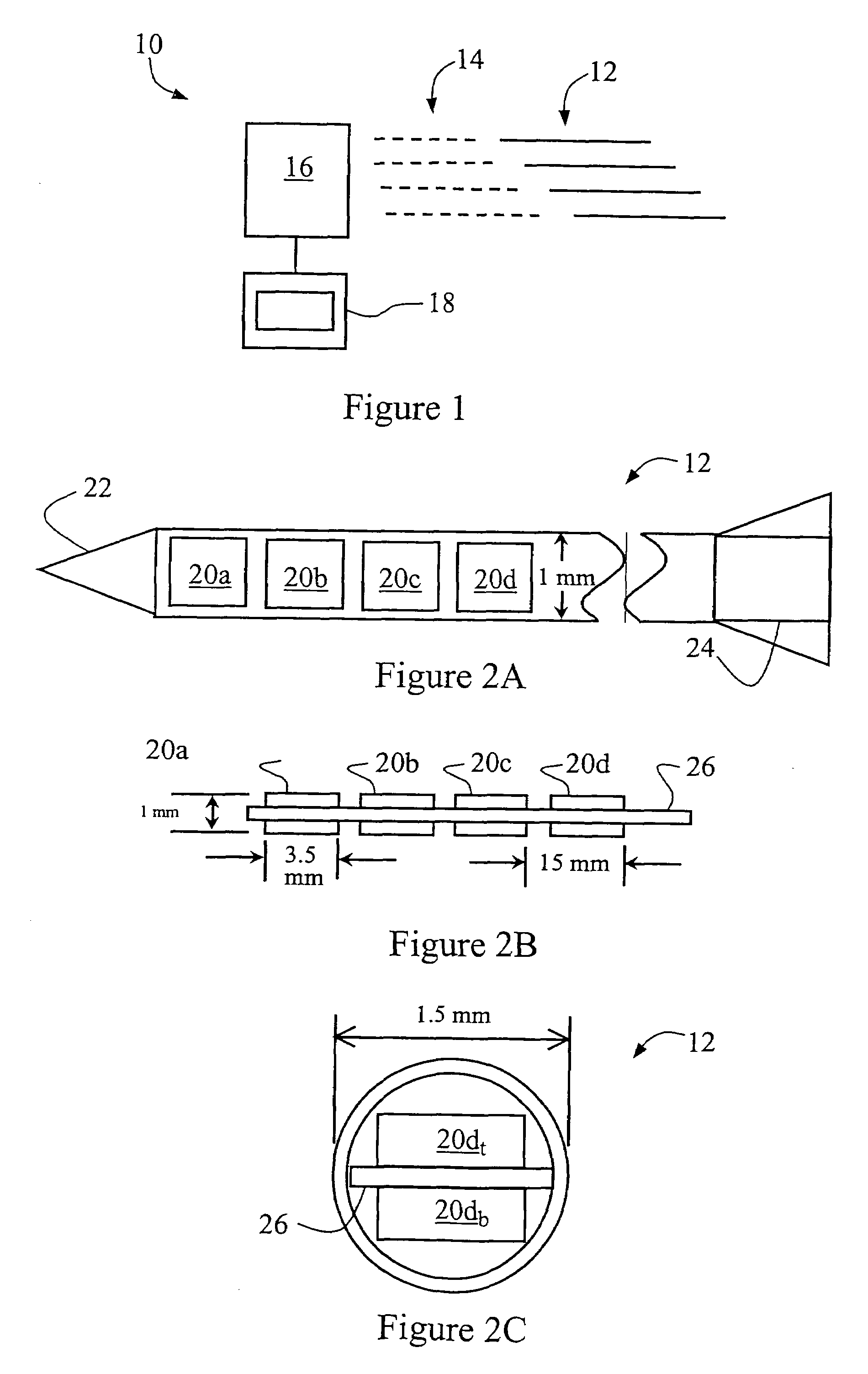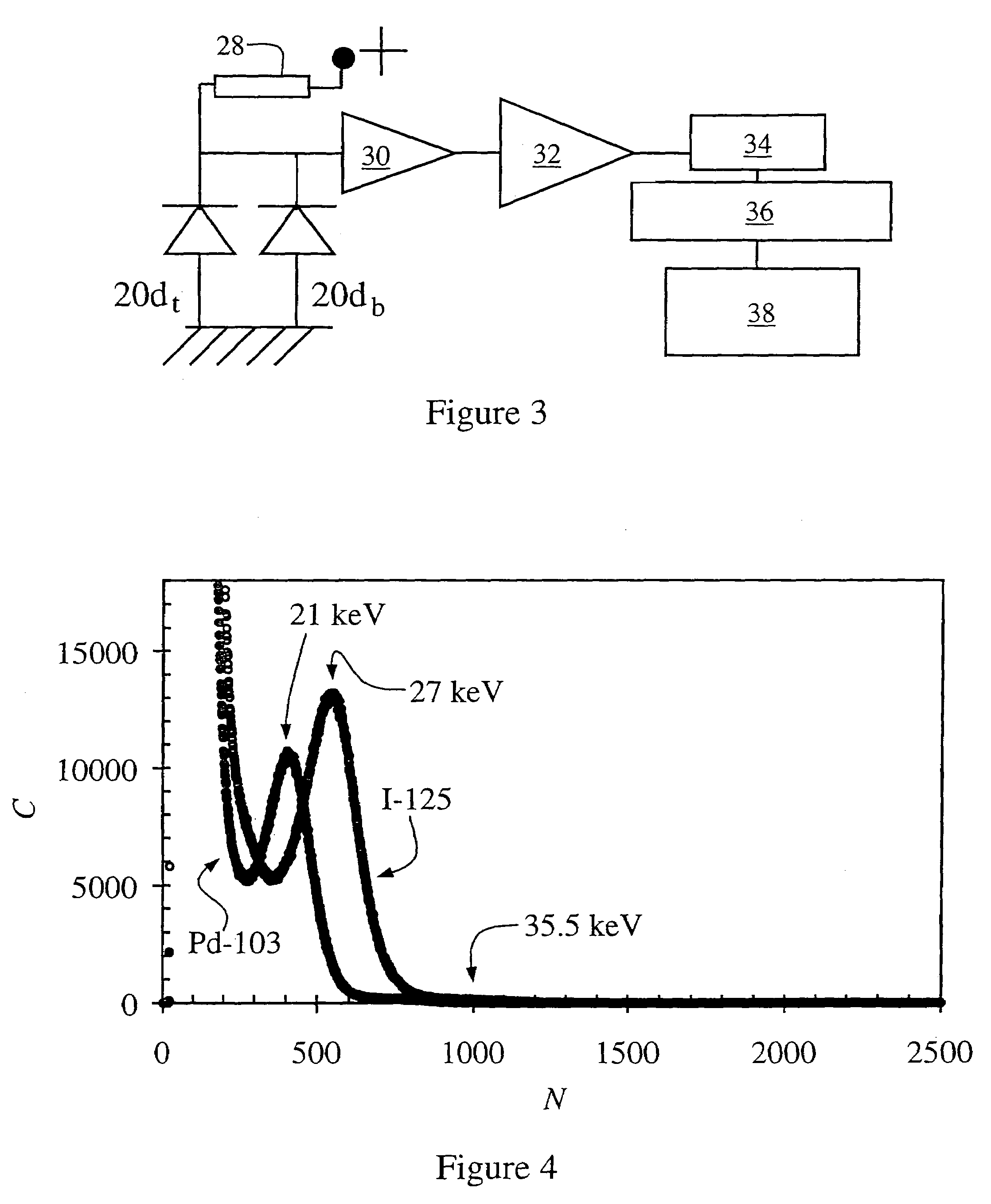Method and apparatus for real time dosimetry
a technology of real-time dosimetry and apparatus, applied in the field of method and apparatus for real-time dosimetry, can solve problems such as confusion in the deduced location of sources
- Summary
- Abstract
- Description
- Claims
- Application Information
AI Technical Summary
Benefits of technology
Problems solved by technology
Method used
Image
Examples
Embodiment Construction
[0079]In an embodiment of the present invention, there is provided a system for determining the dose rate of a radiation source in vivo during brachytherapy, shown schematically at 10 in FIG. 1.
[0080]The system 10 includes four, essentially identical probes in the form of plastic needles 12, connected optically 14 to data collection unit 16. The collection unit 16 is connected to dose-planning and control computer 18, for processing data and producing the final results.
[0081]FIG. 2A is a partial top view of a needle 12, in cross section. Each needle 12 has an internal diameter of 1.5 mm, and contains four silicon PIN diode, CdZnTe or scintillator detectors 20a, 20b, 20c and 20d near the head 22 of the needle 12. The detectors 20a, 20b, 20c and 20d thus occupy only a small forward portion of the total length of the needle 12, which may be between 20 and 30 cm in length.
[0082]The tail 24 of the needle 12 contains the detector electronics for the detectors 20a, 20b, 20c and 20d.
[0083]...
PUM
 Login to View More
Login to View More Abstract
Description
Claims
Application Information
 Login to View More
Login to View More - R&D
- Intellectual Property
- Life Sciences
- Materials
- Tech Scout
- Unparalleled Data Quality
- Higher Quality Content
- 60% Fewer Hallucinations
Browse by: Latest US Patents, China's latest patents, Technical Efficacy Thesaurus, Application Domain, Technology Topic, Popular Technical Reports.
© 2025 PatSnap. All rights reserved.Legal|Privacy policy|Modern Slavery Act Transparency Statement|Sitemap|About US| Contact US: help@patsnap.com



